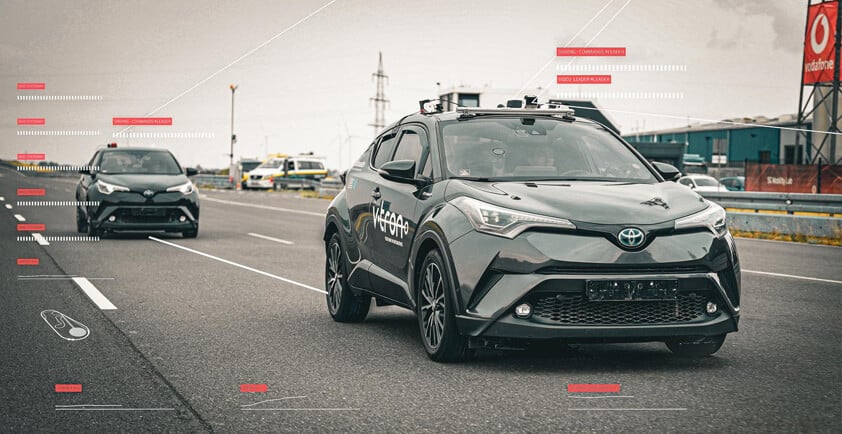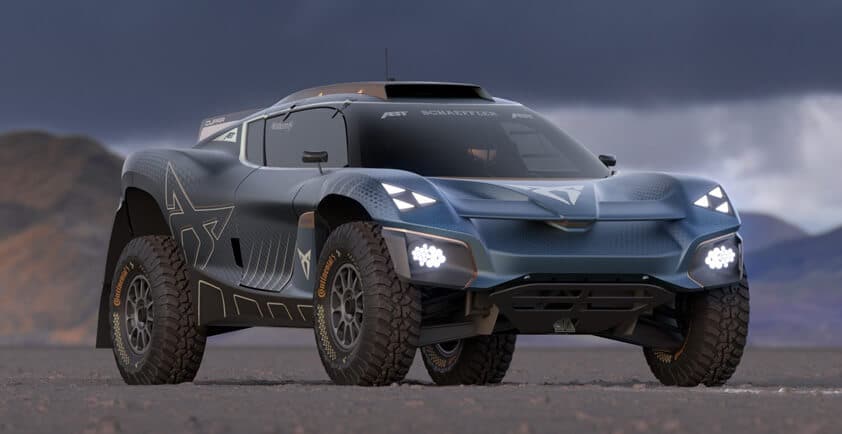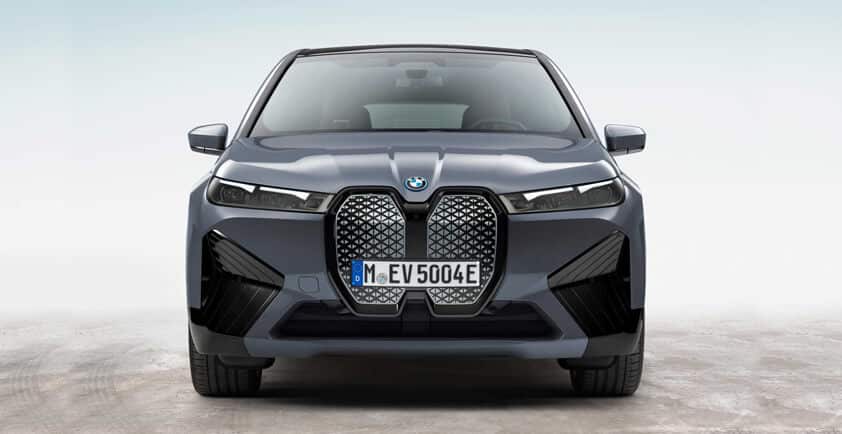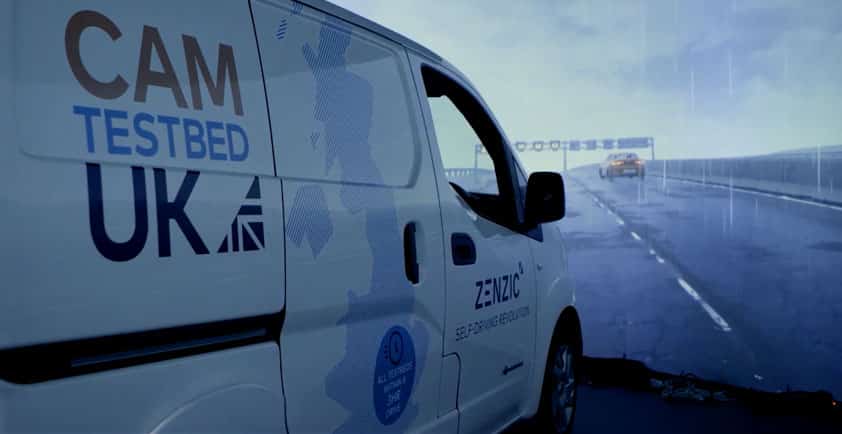

FORD UNLOCKS POTENTIAL OF 5G TO FUTURE-PROOF ELECTRIC VEHICLE PRODUCTION
>> Ford and Vodafone Business lead consortium to develop the potential of 5G in manufacturing.
>> Electric vehicle (EV) manufacturing processes to be enhanced by 5G connectivity.
>> New mobile private network (MPN) to provide faster and more accurate control and analysis of EV manufacturing.
DUNTON, ESSEX – Ford and its consortium partners have received government backing for the introduction of 5G connectivity to speed up electric vehicle manufacturing.
A 5G mobile private network delivered by Vodafone Business, will be installed this year in the new E:PriME (Electrified Powertrain in Manufacturing Engineering) facility on Ford’s Dunton Campus. The Vodafone Business 5G solution is set to overcome many of the issues surrounding wireless connectivity in the industrial setting. It promises reduced delays, wider bandwidth, improved security and reliability, and faster deployment time.
By the time installation is complete in the autumn, E:PriME Dunton will have the fastest possible connectivity alongside the consortium’s second network at welding research specialists TWI, based in Cambridge.
Both sites’ connected equipment will offer real-time control, analysis and remote expert support, ensuring new manufacturing processes are shop floor-ready.
Ford will focus on the connectivity of the welding machines in the manufacture of electric vehicles. The batteries and electric motors within an EV require around 1,000 welds. For a single EV product, this could generate more than a half a million pieces of data every minute. Fast, reliable, high capacity data capture and analysis will be a significant requirement of these processes. Connecting the data with experts, such as TWI and manufacturers, is critical if processes are to develop at the same rate as these innovative products demand.
Chris White, Ford’s 5GEM project lead, said: "Connecting today’s shop floor requires significant time and investment. Present technology can be the limiting factor in reconfiguring and deploying next-gen manufacturing systems. 5G presents the opportunity to transform the speed of launch and flexibility of present manufacturing facilities, moving us towards tomorrow’s plants connected to remote expert support and artificial intelligence."
Vinod Kumar, CEO of Vodafone Business, said: "5G mobile private networks act as a springboard for organisations, allowing them to rethink the way they do business. In this case, MPN technology makes the factory of the future possible. It allows machines and computing power to coordinate in real time, improving precision, efficiency and safety. We’re excited to help Ford plan for the future of its business."
Oliver Dowden, Secretary of State for Digital, Culture, Media and Sport, said at the announcement of £65 million to nine consortia harnessing the potential of 5G:
"We’re determined to harness this revolutionary technology to boost the productivity and growth of UK industries. We want Britain to be a world leader in 5G, and since 2017 the government has invested millions in ground-breaking testbeds and trials across the country to achieve this."
VODAFONE AND FORD TEST DIGITAL PARKING GUIDANCE SYSTEM
Vodafone Germany and Ford are piloting Parking Space Guidance, a new connected-vehicle technology that advises drivers on how many spaces are available in nearby car parks and how to get there.
In major European cities, such as London and Frankfurt, it is estimated that motorists spend as many as 67 hours a year looking for free parking. So called "cruising" for free parking spaces is responsible for about 30% of city traffic according to some research. The companies are now testing technology that could make it easier to find parking spaces in city centres.
As test vehicles drive through Düsseldorf, they receive road status and car park information from Vodafone’s Cellular Vehicle to Everything (C-V2X) mobile network technology. A central computer system provides the information using the vehicle’s geolocation and information from nearby dynamic digital road signs.
Parking Space Guidance technology tells drivers the number of spaces in nearby car parks and how to get to them. The real time system will also update drivers if there is a traffic accident on the route, or if a multi-storey is suddenly busy, displaying a notice and recommendations for alternative parking spaces.
The Parking Space Guidance trialled is part of the KoMoD (Kooperative Mobilität im digitalen Testfeld Düsseldorf) programme in Germany, a €15 million cross-industry project testing new connected‑vehicle and automated driving technologies.
"When vehicles can exchange data with infrastructure in real-time, traffic will become more intelligent, searching for a parking space will become less stressful and people will get to their destination more quickly," said Michael Reinartz, Director of Innovation and Consumer services at Vodafone Germany.
"Satnavs are great at helping us to get to our destination but aren’t so useful when it comes to helping us to park there – especially in city centres," said Tobias Wallerius, engineer, Product Development, Ford of Europe. "Parking Space Guidance is a connected‑vehicle technology that could help drivers to more quickly complete their journey, saving them money, time and benefitting overall air quality."
Vodafone and Ford will also be testing several other features as part of KoMoD including:
> Traffic Light Assistance System in which the time remaining on upcoming red or green traffic signals is displayed on the instrument panel to reduce hard braking, and improve safety, fuel economy and traffic flow;
> Tunnel Information System which provides advance information about lane closures, speed limits and slow-moving vehicles in tunnels up ahead;
> Vario Display which delivers up-to-date information to the instrument cluster about major events that may impact local traffic, such as exhibitions, concerts or football matches;
> Traffic Control Systems on the motorway to help improve the overall traffic flow by adapting speed limits;
> Smart traffic signs transmit speed limit and hazard sign information directly to vehicle displays, helping drivers to identify changes to road signs in bad weather and when surrounded by high sided vehicles; and
> Bad weather warnings that automatically communicate weather conditions from one vehicle to others nearby (for example, if a vehicle's automated windscreen wipers detect rain, it will broadcast this to advise nearby drivers via their in-vehicle displays in case they may wish to adjust their speed or route).
For now, information broadcast between vehicles is intended to enable drivers to make informed decisions about their journeys. However, vehicle‑to‑vehicle and vehicle‑to‑infrastructure communications – such as those in the KoMoD trial – may play an important role in a future in which autonomous vehicles could respond automatically to them.
PROTOTYPE TECH QUICKLY WARNS DRIVERS OF ACCIDENTS AHEAD, COULD HELP CLEAR WAY FOR EMERGENCY VEHICLES TO SAVE LIVES
>> Ford and Vodafone are testing connected vehicle tech that can automatically warn other drivers of accidents ahead and shows how to get out of the way of emergency vehicles
>> Getting help to road accident victims more quickly significantly improves survival rates – and drivers who are confused in these situations cause critical delays
>> Prototype shows drivers how to create an "emergency corridor" – a legal requirement in some countries – so fire engines, ambulances and police vehicles can travel unhindered
DÜSSELDORF, Germany – The consequences of blocking the progress of emergency vehicles – and delaying their arrival at the scene of an accident – could prove fatal. In fact, experts believe that survival rates for road accident victims can be improved by as much as 40 per cent if they receive treatment just four minutes more quickly.
Together with Vodafone, Ford is now testing connected vehicle technology that could alert drivers to an accident ahead moments after it has happened. Furthermore, the system can provide early warning that emergency vehicles are approaching – and which side of the road they should move towards to avoid being an obstruction
The system is designed to create an "emergency corridor" along which fire engines, ambulances and police vehicles can reach their destinations more quickly; and is being trialled as part of KoMoD (Kooperative Mobilität im digitalen Testfeld Düsseldorf) – a €15 million project for the practical testing of new connected car technologies and automated driving.
"Connected and automated driving are key technologies of the future. Ford has a long history of developing and testing vehicle to traffic infrastructure and vehicle to vehicle communications that can contribute to greater road safety and efficiency across the world. Together with Vodafone and in cooperation with the other companies involved, we will gain decisive insights on the Düsseldorf testing grounds to further advance the networking of vehicles," said Gunnar Herrmann, CEO, Ford of Germany.
Already, in the event of an accident, "eCall" functionality, which is available on the all-new Focus, can automatically call emergency services, and enables occupants to do so manually by pushing an SOS button inside the car.
Anticipating a future where all vehicles communicate with each other via mobile phone networks and embedded modems, Ford and Vodafone are now exploring how "eCall Plus" might also inform other drivers that there is an accident ahead, across a range of up to 500 metres. Attending emergency vehicles would also issue the warning, using in-car displays to show the correct "emergency corridor" formation.
On two-lane roads "emergency corridors" are created in between the two lanes by drivers pulling over to either side. If there are more than two lanes, then it depends whether the rule of the road is to drive on the left or the right. For those countries where motorists drive on the right, the corridor is created between the lane on the far left and the lane directly alongside.
But even in those countries where it is already a legal requirement for drivers to take this approach, many drivers still do not comply. In Germany, a survey revealed that almost half of all drivers don’t know how to form an "emergency corridor".
The new technology complements Emergency Vehicle Warning technology that Ford is also testing at KoMoD. This sends a signal from the ambulance, fire engine or police car directly to nearby drivers, so that they will know the exact location of the vehicle and how far away it is. This can be especially useful in urban areas, for example at a crossroads where it might be difficult for drivers to immediately know where the siren is coming from.
"The digital revolution is bringing new forms of mobility which may help save lives on our roads," said Hannes Ametsreiter, CEO, Vodafone Germany. "When cars communicate with each other, our rescue teams get a clear path forwards, so they can provide the right help at the right time, in situations when every second counts."
Ford will also test further technologies at KoMoD that demonstrate the potential of connected vehicles. The Traffic Light Assistance System uses information on traffic light timings. A Tunnel Information System uses messages from roadside units to display to the driver warning messages about speed limits, slowly moving vehicles or lane closures.













